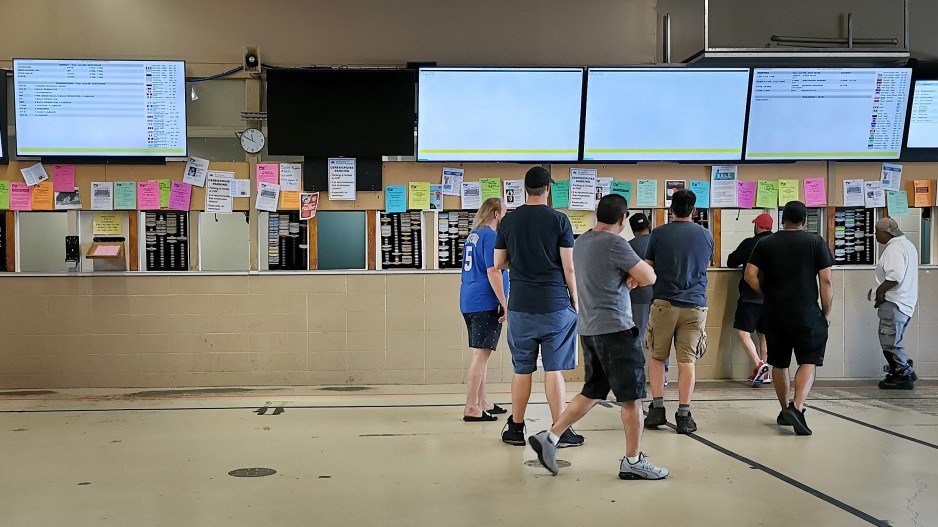A trio of market factors has raised the temperature in negotiations to secure a new collective agreement along the B.C. waterfront.
Factor 1: The cooling-off period instituted in the wake of the federal conciliation process between the International Longshore and Warehouse Union Canada (ILWU) and the BC Maritime Employers Association (BCMEA) expired on June 20. That opens the door for either side to issue 72-hour strike or lockout notices. The ILWU members that qualify to cast ballots have already
Factor 2: A tentative agreement has been reached between the 91原创 Maritime Association (PMA) and the 22,000 unionized dockworkers employed at 29 ports along the U.S. West Coast who had been without a contract since July 2022.
Factor 3: 2023’s downbound economy is reducing demand for shipping at the same time as major ocean carriers are adding a lot of container cargo capacity to their fleets following two years of record industry profits.
Any one of those factors could increase contract negotiation urgency; the combination of all three multiplies that urgency significantly.
Both sides still have to ratify the tentative agreement for U.S. West Coast ports, but, as it did during the previous rounds of negotiations up and down the West Coast of North America, a deal done in the United States promising waterfront labour peace south of the border reduces the leverage of both sides along B.C.’s West Coast, where the cargo throughput is far smaller than its U.S. counterpart.
Also, because of the caused by the pandemic, ocean carriers now have readily available alternatives for rerouting transpacific cargo.
That is bad news for both dockworkers and their employers, especially if temporary diversions away from B.C.’s West Coast become permanent.
U.S. West Coast ports are themselves in a fight to slow the migration of containerized cargo away from their terminals to ports in Mexico and the Gulf and East Coast.
That migration began in 2003, according to the PMA’s Ports in Peril: The Alarming Cost of Declining Market Share at San Pedro Bay Ports, because of the lockdown of West Coast ports during the 2002 contract negotiations between the PMA and the ILWU.
More recently it has been accelerated by the 2016 opening of the widen Panama Canal, port operation slowdowns during the 2014-15 ILWU contract negotiations and by pandemic economy cargo congestion.
Ports in Peril repeatedly rings the cargo migration alarm bell. It notes, for example, that “the West Coast ports, and in particular the San Pedro Bay ports [Los Angeles-Long Beach], have never regained lost market share, and [a] reversal is not likely in the foreseeable future …”
The long delay in reaching this year’s tentative collective agreement along the U.S. West Coast increased uncertainty and cargo diversion to ports on competing coasts.
The most recent numbers from container shipping analyst John McCown confirm the continuation of that trend.
His May report noted that inbound cargo to the 10 largest ports in the United States dropped 20.1 per cent in May compared with May 2022. May, he pointed out, was also the eighth consecutive month of double-digit inbound cargo declines. While the cargo decline in May for West Coast ports (19.6 per cent) was slightly less than the decline at their East Coast counterparts (20.7 per cent), McCown noted that April was the 23rd straight month in which the percentage change in volume at East and Gulf coast ports outperformed West Coast ports.
Back in B.C., the collective agreement between the BCMEA and the ILWU that expired at the end of March was reached in May 2019 following a 90-minute BCMEA lockout and under the threat of a full-blown ILWU strike.
Contracts guaranteeing labour peace at U.S. West and East Coast ports were already in place.
Saner heads prevailed in B.C.
Will they do the same this time around?
In a more robust economy with consumer and other demand driving transpacific trade, unionized dockworkers would have had more contract negotiation leverage.
But Peter Ku, regional vice-president for freight forwarding company OEC Group, said he and his company are not seeing a significant improvement in that demand this year.
He pointed out that cargo flow has slowed significantly since the end of last year and has been depressed for the past nine months.
“In terms of [contract negotiation] leverage, I think they [longshore union members] were hoping that it would improve. And it really hasn’t improved. Personally, I don’t think that it’s going to improve this year, just because of what I’ve seen on the production side and the order side. The volume and the demand just isn’t there.”
The most recent numbers from Drewry, a U.K.-based shipping consultancy, underscore the drop in business for container ports and terminals. According to that data, the average quarterly growth rate in global port throughput has dropped from 8.7 per cent in 2021’s third quarter to minus-0.2 per cent in 2023’s first quarter.
Eleanor Hadland, Drewry’s ports and terminals senior analyst, noted that the port throughput in North America hit minus-5.6 per cent in 2023’s first quarter.
Drewry’s overall forecast for container port throughput growth in 2023 is a tepid one per cent.
@timothyrenshaw



